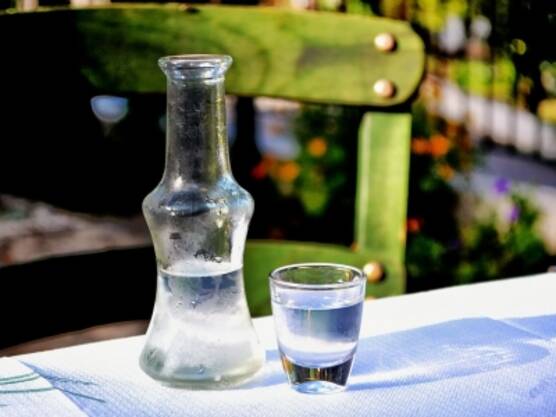- [email protected]
- Availability Location: Greece

The long history of raki dates back to the Minoan years, while the art of distillation found fertile ground in Greece around the 15th century, as it began on Mount Athos, as evidenced by documents of the Ecumenical Patriarchate. Its fame spread rapidly throughout the Turkish-occupied East, turning Crete, Istanbul, Izmir and Alexandria into distilleries.
During the Ottoman rule, the Greeks were introduced to the art of raki production, as wine, being forbidden by the Koran, had to be processed to allow its consumption. However, the Ottomans did not deal much with the cultivation of vines, with the result that this profession was Greekized. Soon, the Greek producers of raki, together with the perfumers, formed a privileged social class.
After the Asia Minor Catastrophe, raki producers sought a new opportunity for work and survival in Greece, quickly spreading their art.
There is an ambiguous view as to the origin of her designation. It is called raki, as it comes from a distillate produced from grape skins (ancient Greek: rax - Ionian: roux). In Crete it is also called tsikoudia, because the marcs in the Cretan dialect are called tsikouda. Turkish raki, however, is a different drink, as it has aromatic additives and is double distilled, unlike raki.
During the production of the wine, the remnants of the must are sealed in barrels, where they remain until the fermentation is completed, as they will be ready for distillation. The product that results after the completion of the fermentation is the marcs or tsikouda. Then, they are transferred to barrels or cauldrons (the so-called rakokazana or ambykes), where sealed, they start to boil and when they reach the required temperature, the distillation process begins. The slow pace of this process brings the best result. Then, from the lid of the cauldron, through a tube that is cooled externally with water, the distillate flows and the steam that comes out as tsikoudia is liquefied. The first part of the distillate (protorako) is considered the strongest. Raki contains about 37% alcohol, making it rightfully in the category of the strongest alcoholic beverages.
Raki in Crete is a sign of friendship, hospitality and a mean of communication. With it they overcome their sorrows, celebrate their joys and are cured of all kinds of mental and physical pain. The whole process of raki production is a ritual for the inhabitants of the island. The famous "kazanemata" last about two months and take place in specially designed spaces. They gather around the cauldron, playing lyre, dance, taste various traditional Cretan delicacies and wait for the transparent fragrant nectar to arrive.